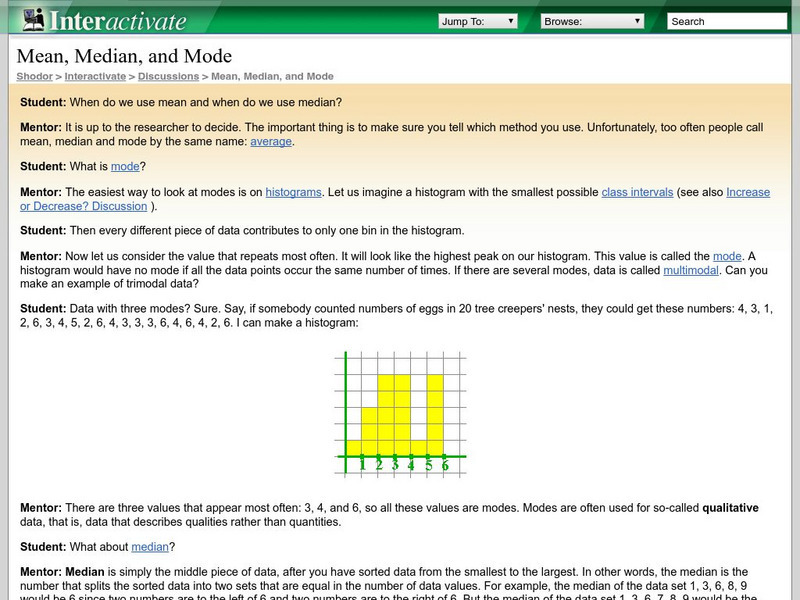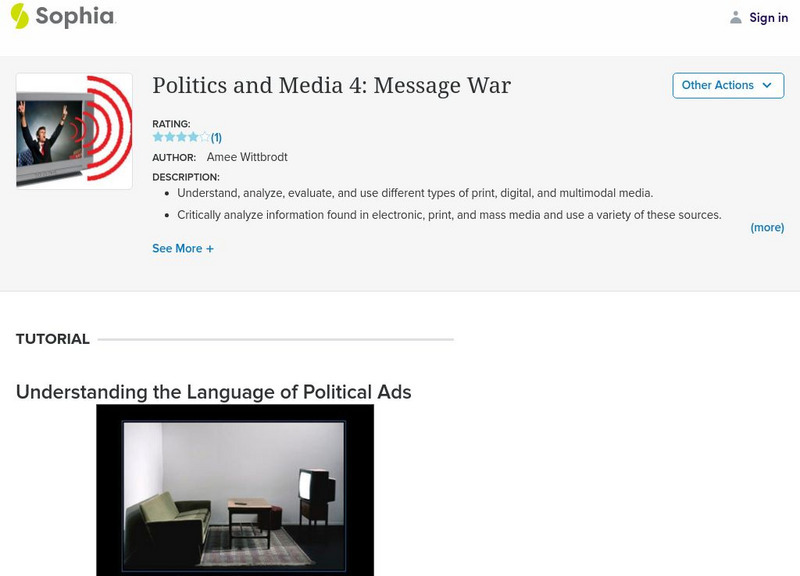K20 LEARN
Considering "Charles": Pictograms, Annotations, Reading Strategies, And Multimodal Responses
Shirley Jackson's short story, "Charles," provides middle schoolers with an opportunity to practice their close reading skills. Using the provided list of prompts, scholars read and reread the story, then create a multimodal response to...
K20 LEARN
Introduction to Arguing Effectively: Argument Writing
Which is better—Chick-fil-A or MacDonalds? High schoolers learn how to craft an argument essay by beginning an opinion statement. They state a claim, back up their claim with evidence, and consider counter calms. Scholars then create a...
K20 LEARN
A Multimodal Approach To Edgar Allan Poe Using Drawing To Understand An Author's Style
True! Poe's "The Tell-Tale Heart" makes readers nervous. But how? Young scholars create a drawing while listening to a reading of Poe's eerie tale to understand how writers create the mood of their stories and what their writing style...
K20 LEARN
Multimodal Narrative Writing: Thumbprint Autobiography
Thumbprints, like people, are unique. Middle schoolers watch videos that explain how fingerprints are created and why they are unique. Learners then respond to guiding questions about themselves and use these details to create their...
CK-12 Foundation
Mode: Mucho Money
Generate stacks of money. Given bills of different denominations, pupils stack them based on their values. The learners figure out which value is the mode of the data and determine whether the data is unimodal, bimodal, or multimodal.
K20 LEARN
The Eyes of Dr. T. J. Eckleburg: The Great Gatsby and the Sense of Sight
To conclude a study of The Great Gatsby, class members create a multimodal project that represents what they feel the eyes of Dr. T.J. Eckleburg see about the hidden side of one of the characters in F. Scott Fitzgerald's classic...
Curated OER
Advertising in the Contemporary World: An Introduction to Persuasive Texts
Beginning a persuasive writing unit with your middle schoolers? Approach it through something that persuades us all: advertising! Through studying video and print advertisement, your class will practice Common Core skills for reading...
ReadWriteThink
Defining Literacy in a Digital World
What skills are necessary to interact with different types of text? Twenty-first century learners live in a digital world and must develop a whole new set of skills to develop media literacy. Class members engage in a series of...
Curated OER
Vowels: review of short and long e, o
First graders investigate sounds of short and long vowels for e and o. They develop phonics skills through drill and practice sessions. They use a variety of activities that include games. This is a whole unit plan.
Curated OER
School House Rock! Science Rock
Pupils use common household and classroom objects to generate static electricity and study its effects. They discuss the video Science Rock CD called Electricity, Electricity. The video explains many things about electricity.
Other
Creating Multimodal Texts
This website is an evolving compilation of resources designed to support the development of student multimodal authoring at all year levels. It features examples of different types of student multimodal compositions (both print and...
Lumen Learning
Lumen: Examples of Multimodal Texts
This lesson focuses on providing examples of multimodal texts, those using more than one mode of communication in the same text.
Lumen Learning
Lumen: Introduction to Multimodality
This is an introduction to multimodality including the difference between mode and medium. Click on the Next link.
Lumen Learning
Lumen: Multimodality: Putting It Together: Multimodality
This is a summary of the lessons on multimodality including the relationship between media and modes, the five modes of communication, multimodal texts, remediation, remix, and attribution.
Texas Education Agency
Texas Gateway: Tone Is in the Fear of the Beholder:using Multimodal Mentor Texts
A demonstration lesson presented at the 2014 Write for Texas Summer Institute. It provides a snapshot of a four to five week unit that engages students in the reading and writing workshop model.
Lumen Learning
Lumen: Multimodality: Remix and Attribution
This instructional activity focuses on defining remix, why attribution is important in a remix, and how to attribute fairly. It also provides a table, Limitations When Remixing Copyrighted Work, and a practice exercise....
Lumen Learning
Lumen: Multimodality: What Is a Mode?
This lesson focuses on the definition of mode, the five modes of communication, and the difference between mode and medium.
Lumen Learning
Lumen: Multimodality: The Five Modes of Communication
This lesson focuses on the five modes of communication: visual, linguistic, spatial, aural, and gestural along with examples of each.
Lumen Learning
Lumen: Using Sources: Putting It Together: Using Sources
This is a summary of the lessons on integrating credible sources using paraphrase, summary, and quotations and citing sources. Click on the Next button on the bottom right to learn about Why It Matters: Multimodality; you will have the...
ReadWriteThink
Read Write Think: It's My Life Multimodal Autobiography Project
Contains plans for nine lessons that ask students to write autobiographies before creating multimedia presentations for them. In addition to objectives and standards, this instructional plan contains links to sites used in the lessons as...
Shodor Education Foundation
Shodor Interactivate: Mean, Median, and Mode Discussion
This is a virtual discussion between a mentor and student involving mean, median, and mode. Discusses when each is used and how they are found.
Sophia Learning
Sophia: Politics and Media 4: Message War
Through a variety of resources and external links, students gain an understanding of the language of political ads.
ReadWriteThink
Read Write Think: Playing With Prepositions Through Poetry
Students play with and explore prepositions during a whole group reading of Ruth Heller's Behind the Mask, and then by composing and publishing prepositional poems based on the book's style.
Other
Find Biometrics, Global Identity Management
This site is geared more toward a consumer than a student, but it does list, describe, and in some cases compare each of the primary identification methods (fingerprints, iris recognition, voice, etc).






















